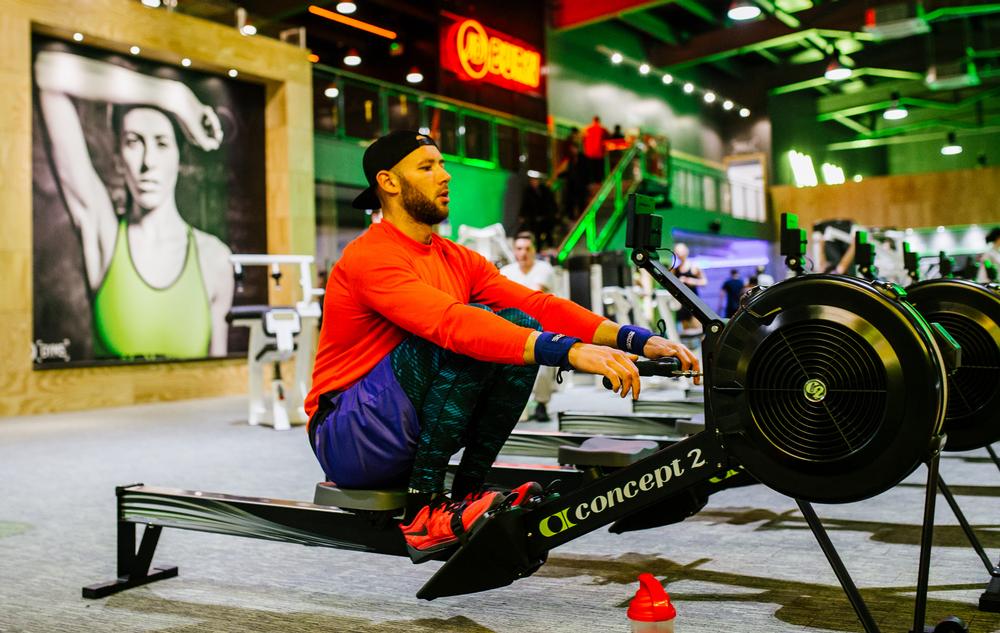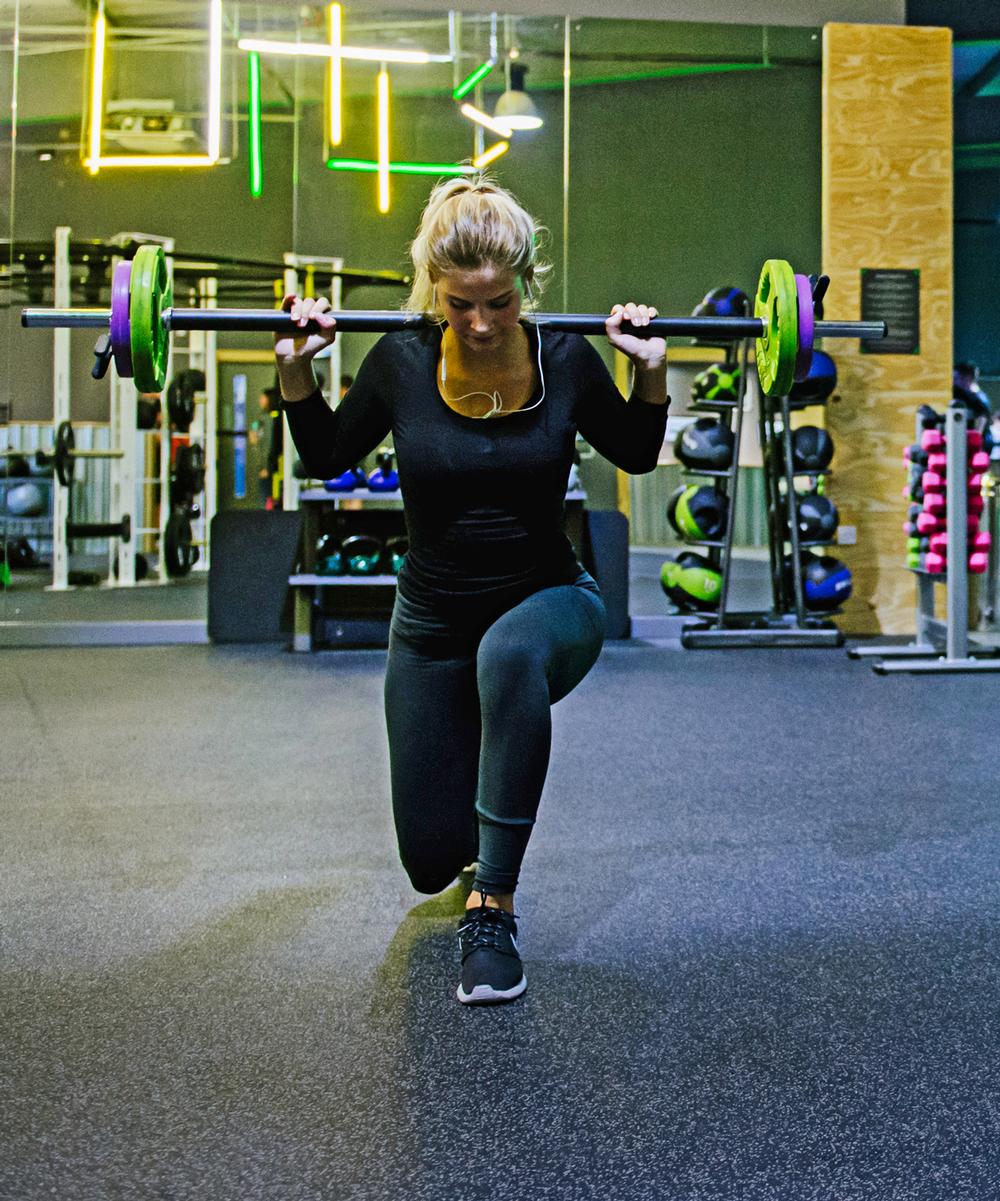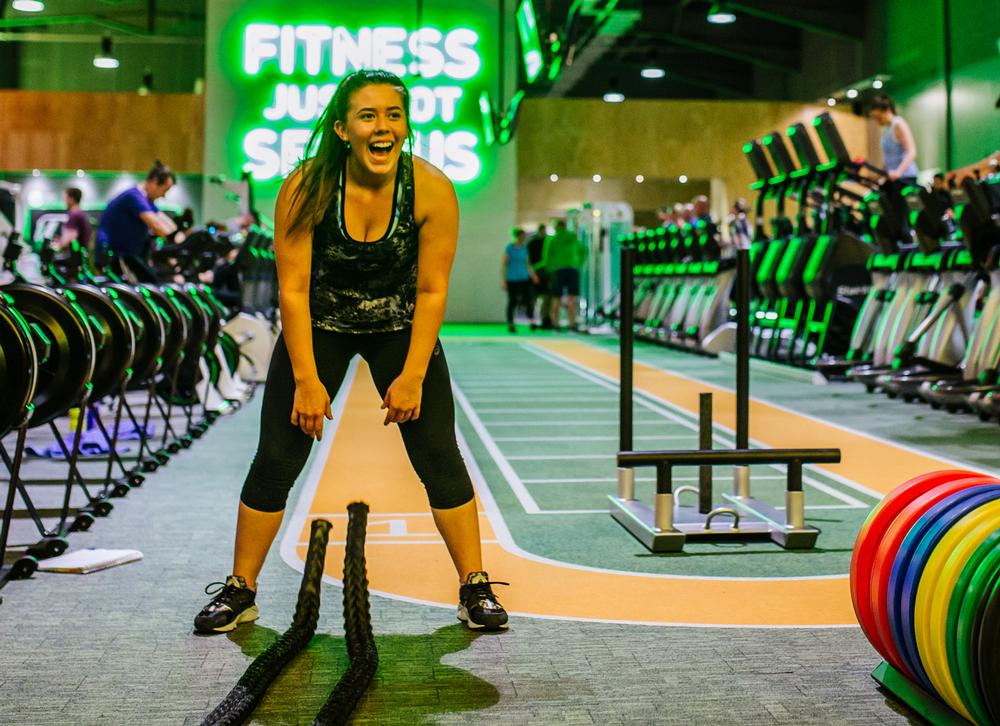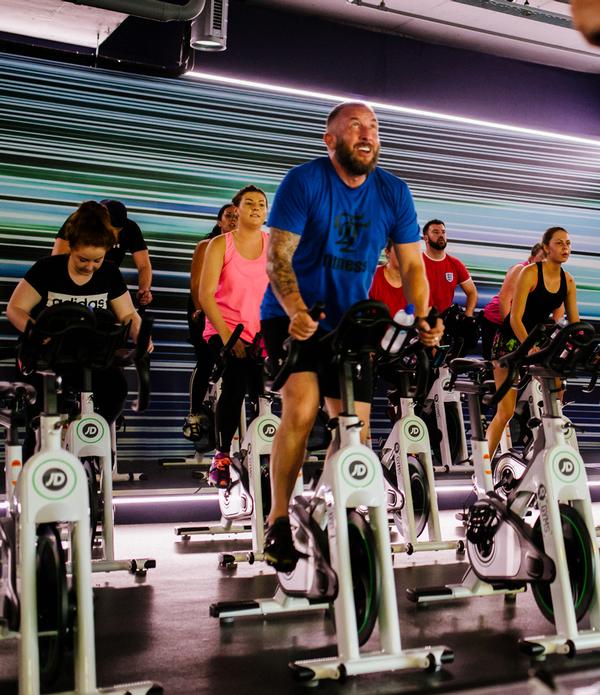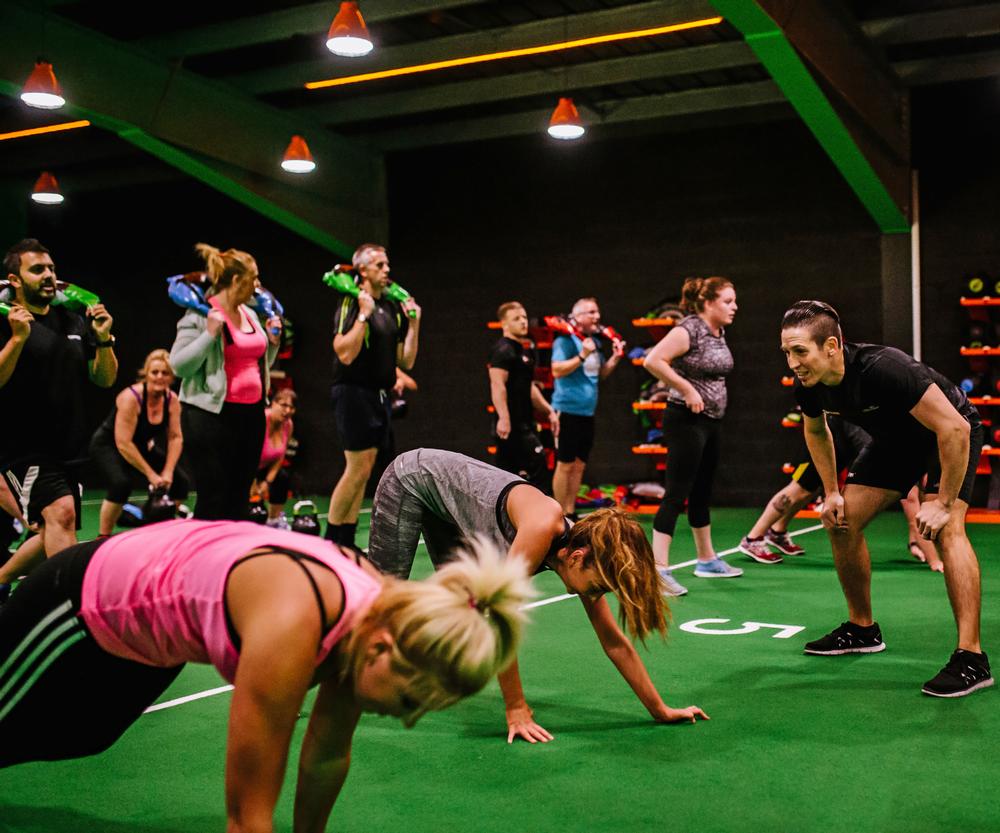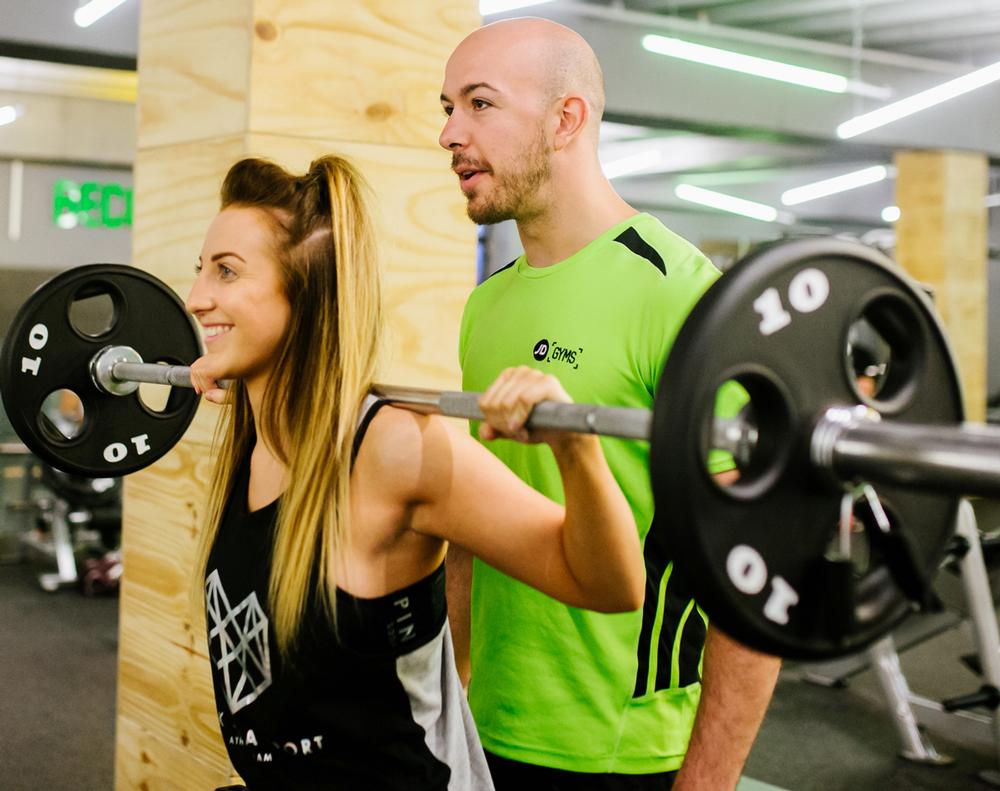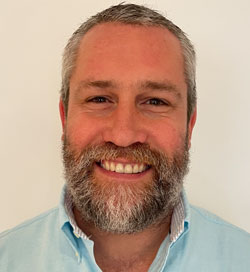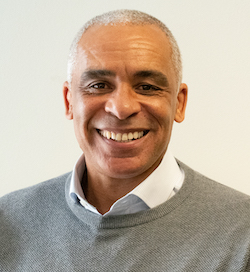We’ve proved the model works,” says Alun Peacock in reference to the JD Gyms business – the premium low-cost gym brand he was brought in to launch under the umbrella of parent company and retail giant JD Sports in 2014. “We’ve fine-tuned the concept and have moved into the roll-out phase.”
He takes a step back in his storytelling: “The JD business is very entrepreneurial and three years ago, having identified an opportunity in the market, it decided to trial a new gym concept and gauge the market’s response.
“At that stage, we talked about proof of concept. The clubs had to make money in their own right, but we were relatively open-minded about the whole thing. We didn’t immediately set out with the goal of opening hundreds of clubs. The aim was simply to test the concept with a view to creating a nice business that would complement the core brand and make some money for the shareholders.
“And we’ve delivered on that. We’ve created a complementary brand that further enhances JD brand awareness and that’s very profitable in its own right – we can get a club to profitability very quickly, in large part thanks to our highly successful, data-driven pre-sales process.
“We now have the appetite to grow faster, and with the JD brand behind us we’re well-resourced to do so. By the end of this year we’ll have 16 sites, each at a fit-out cost of £1.5m–£2m, and we’ll open another 10–12 next year. We’d even consider acquisitions if the right deal were to present itself.”
Striking a balance
Yet in spite of the financial power that JD brings (see ‘JD Group’s acquisitions’, p32), Peacock still isn’t aiming for the sort of rapid growth we’ve seen from other low-cost operators.
“There isn’t going to be a race towards a certain number of sites. Quality is more important than quantity for us. We will increase the number of openings year on year, but we’ll continue to grow in the same way we always have: sensible property deals in locations that offer long-term sustainability for a successful business.
“Our steady rate of growth is also driven by the way we do gyms: there’s an awful lot that goes into design. Batley – the 10th and latest site, which opened on 16 June – was two years in the making. That’s fairly exceptional, but it’s not unusual for us to take a year from viewing a site to opening it. Every elevation, every material we use, we micro-manage that process. That’s more of a challenge as you ramp up, but we aren’t willing to compromise those standards – even when, as will be the case later this year, we have a crowded club opening schedule.
“So that’s really our biggest challenge: ensuring we don’t lose the JD Gyms’ quality by growing too quickly, versus using the resources we have at our disposal to grow this profitable business in a sufficiently speedy manner.”
An eye for design
So what is it about the design that makes JD Gyms so special? “We’ve set out not only to be better than other gyms, but to be totally different from other gyms,” Peacock explains.
“A big part of that involves working with retail designers and shop fitters as well as gym designers. We use metal, neon, a lot of timber – materials the retailers typically use – to create an atmosphere that makes people want to come back.
“We also offer equipment you won’t find in other gyms: we source it all through Fitness Systems and it isn’t mainstream stuff. It also carries our own brand – the indoor cycling bikes are all branded ‘JD Gyms’, for example – because we believe this has more resonance with the consumer than any of the equipment brands.
“It’s about creating a space that, when you walk in, feels like nothing you’ve seen before. Our design is protected throughout the EU to safeguard that point of difference.”
He continues: “Our members’ average age sits at 28–29, so we’re also aiming to create environments that people have a really strong opinion about. I have a tremendous amount of respect for the low-cost operators, but I find them both difficult to love and difficult to hate. There’s not much that stands out to particularly love, but equally there’s nothing so bad that you hate it.
“With us, we create much more of an opinion. Some people find our environment too intense – our lighting, our décor, our music, and also our ethos of working hard, which is summed up in our slogan ‘Fitness Just Got Serious’. Equally, we get people who love it so much they want to post photographs of it on Instagram.
“In the end, we want to create something that makes a strong impression on people – something you can’t ignore.”
Creating USPs
This attention to design detail is one of the reasons why JD Gyms doesn’t feel the need to compete on price, as Peacock confirms: “We aren’t the cheapest in town: we don’t sell memberships for less than £19.99 any more, and in some areas if you want no contract it’s £25 a month. There’s always somebody lower cost than us.”
But design isn’t the only factor that allows JD Gyms to step out of the price war. The operator has also taken the time to understand its audience and what they want from their gym, and delivers strongly in these areas to ensure further USPs over the competition.
Peacock explains: “We concentrate very heavily on two areas: free weights and group exercise. That’s where our more discerning members sit.
“For example, we find that members who use the free weights areas know what they’re looking for. They recognise quality of equipment. They understand where bottlenecks will typically sit, so they appreciate the way we’ve designed the area around this.
“And then, in the area of group exercise, we have a very strong offering that’s included in the membership. We have great studios and a wide range of classes, but we also have excellent instructors. That’s key, because design will only go so far: it will get people in, but it only takes a few weeks for members’ focus to shift to service standards and people, as well as factors like maintenance and cleanliness. You have to be ready to deliver in all those areas too.”
From ‘facility’ to ‘club’
He continues: “We also have new concepts such as JD Burn, which we originally launched in Wigan and Leeds late last year. It’s an organised HIIT class that’s designed to maximise the throughput of people and deliver results for everyone.
“We’ve created a studio with lanes: at Wigan we have eight lanes, each of which can take six people – so 48 people in total – and each group of six moves through those eight zones. We do Burn 500, which is a 500-calorie workout, as well as the 1,000-calorie workout Burn 1000.
“We knew a number of operators had an uphill struggle to get their gym floor classes working, but we felt we had a good model – and so it proved. Our biggest challenge was managing expectations: in the first week, we were getting 65–70 people on the waiting lists. We now run about six classes a day, they always have waiting lists, and 80–90 per cent of participants come back to do it again.
“Therefore, where space allows, we’ll always have JD Burn. At Batley, it’s in a space on the gym floor that looks like a New York street basketball court: green artificial turf and white lines surrounded by black mesh. It has a very athletic feel to it – nothing like your typical wooden sprung floor and mirrors. It’s much more street than that, and people like it because they’re there to sweat and work hard.
“We run Burn with our personal trainers, which gives them a fantastic springboard to meet members and launch their business. That’s key for me, because looking after staff is so crucial to success.
“I spend a lot of time with our PTs talking about the ethos of the club and what we expect from them, but also what they can expect from us.
“If they feel that we aren’t getting things right, if anything is slipping in terms of maintenance, then my door is open for them to come and tell me so. I tell them: ‘We will provide you with the facility; you provide us with the club.’”
Fitness meets retail
Having now proven its concept, JD Gyms is on the verge of launching its 11th site – this time with a new model. Set to open in Salford next month, it will be JD’s first combined retail and fitness site. The likes of DW have done this for years – so why hasn’t JD done it before, and what has sparked the decision now?
“It’s entirely to do with the Salford site. I’d love to be able to tell you it’s some strategic move beyond that, but very simply we found a space that works for JD from a retail perspective and works for JD Gyms from a gym perspective,” says Peacock.
“That’s quite unusual, as our requirements are generally very different, so this is by no means the start of a widescale roll-out of a retail/gym hybrid. We’d look to do it again if another opportunity came along that worked for both, but it isn’t a priority within our roll-out and JD Gyms will continue to operate relatively autonomously within the broader JD Group.”
Building a fan base
So the next wave of development will, it seems, be standalone clubs, rolling out the now-proven concept that started life three years ago.
That said, Peacock admits he is “like everyone else, watching the boutique model”. He adds: “We don’t see it as a threat or competition, as it’s very different from what we do and I’m yet to see evidence of a nationwide scaleable model in the UK, but there are a couple of people who’ve tried it outside of London. We’ll watch and see how it goes.”
So what might a JD boutique look like? Might we see standalone JD Burn studios on high streets any time soon, I ask? Peacock laughs. “That’s a good idea!” he says.
“I think it’s worth saying, though, that we’re already giving that level of training free of charge within our clubs. You’re right that we could have charged for it: the throughput of people would have been significantly lower, but the revenues would have been nice.
“But for us it’s all about exceeding expectations. We want to build a large and loyal fan base: people who pay us month after month after month and who tell other people how wonderful JD Gyms is. That’s the big picture for us.”








